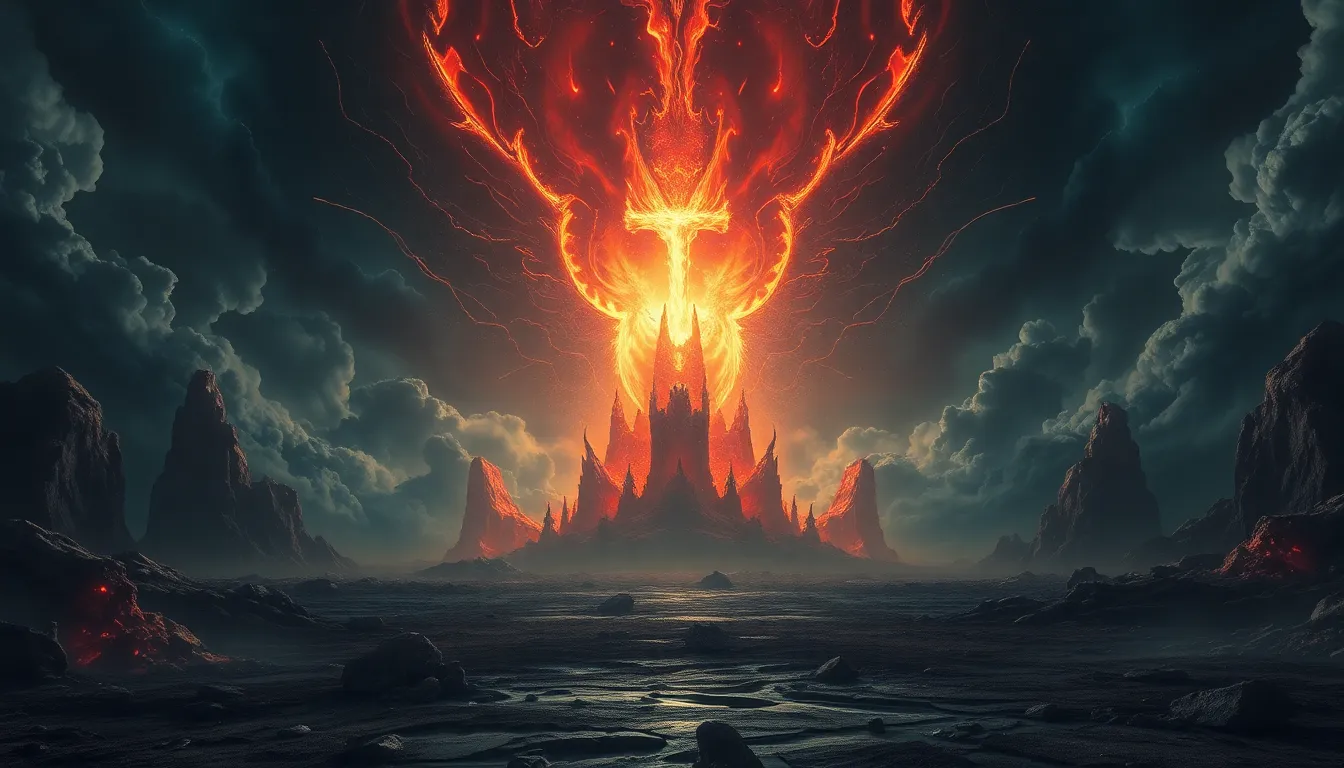The End is Near? Exploring the Myths of the Apocalypse
1. Introduction: Understanding the Apocalypse
The term “apocalypse” has evolved over centuries, often associated with cataclysmic events signaling the end of the world. Historically, it has roots in Greek, meaning “to uncover” or “reveal,” suggesting a disclosure of hidden truths rather than solely destruction. In various cultures, the apocalypse is depicted as both a literal end and a metaphorical transformation, shaping human understanding of mortality and existence.
This article aims to explore the multifaceted interpretations of the apocalypse, examining historical beliefs, religious narratives, modern predictions, psychological aspects, environmental concerns, conspiracy theories, and cultural representations. Through this exploration, we seek to differentiate between myth and reality in apocalyptic narratives.
2. Historical Perspectives on Apocalypse Prophecies
Throughout history, numerous civilizations have held beliefs about the end of the world. These apocalyptic visions often reflected the societal and environmental challenges of their times.
- The Mayans: Often associated with the 2012 phenomenon, Mayan prophecies suggested a cyclical nature of time, with significant transitions rather than a definitive end.
- The Egyptians: Their mythology included concepts of rebirth and renewal, particularly through the god Osiris, symbolizing a continual cycle of life, death, and resurrection.
- The Greeks and Romans: Philosophers like Plato and later Christian thinkers debated eschatological themes, influencing Western thought on apocalyptic events.
These historical perspectives demonstrate that apocalyptic beliefs often served as a means of understanding the human condition amidst chaos and uncertainty.
3. Religious Interpretations of the End Times
Major world religions provide diverse interpretations of the apocalypse, often framing it within moral and ethical contexts.
- Christianity: The Book of Revelation describes vivid imagery of the end times, involving judgment, redemption, and the establishment of a new heaven and earth.
- Islam: The Quran details signs of the Day of Judgment, emphasizing accountability and the eventual triumph of good over evil.
- Hinduism: Concepts of Kali Yuga, the age of darkness, denote a cyclical view of time where the world undergoes destruction before renewal.
- Buddhism: While not focused on an apocalypse in a traditional sense, it teaches about impermanence and the cyclical nature of existence.
These interpretations reveal how religious narratives often provide a framework for understanding human struggles and the quest for meaning in the face of uncertainty.
4. Modern-Day Apocalyptic Predictions
The 20th and 21st centuries have seen a surge in apocalyptic predictions, often fueled by technological advancements and societal anxieties.
- Y2K: The year 2000 brought widespread fears of a technological collapse, which ultimately proved unfounded.
- 2012 Mayan Calendar: Misinterpretations of Mayan prophecies led to widespread panic about a predicted apocalypse that never materialized.
- Climate Change: Increasing concerns about environmental degradation and climate change have led to predictions of societal collapse, prompting discussions on sustainability.
These modern narratives often reflect contemporary fears, influenced by rapid changes in technology and the environment.
5. The Psychology of Fear: Why We Fear the End
Apocalyptic anxiety can be traced to various psychological factors, including existential dread and uncertainty about the future.
- Existential Anxiety: Humans grapple with mortality, leading to fears of annihilation and the unknown.
- Media Influence: Sensationalized news coverage and apocalyptic themes in popular culture amplify fears, shaping public perception.
- Cognitive Bias: People may focus on catastrophic outcomes, dismissing more likely scenarios, which fuels anxiety and paranoia.
This psychological landscape highlights the interplay between fear, media representation, and societal narratives surrounding the apocalypse.
6. Environmental Catastrophes: Real Threats or Just Hype?
Environmental issues like climate change and natural disasters pose legitimate threats to societal stability, yet they are often sensationalized.
- Climate Change: Scientific consensus indicates that climate change could lead to significant disruptions, including extreme weather events, food shortages, and displacement.
- Natural Disasters: Events such as earthquakes, hurricanes, and wildfires can devastate communities, yet they are part of natural cycles.
While these concerns warrant attention, distinguishing between legitimate threats and exaggerated fears is crucial for informed public discourse.
7. The Role of Conspiracy Theories in Apocalyptic Beliefs
Conspiracy theories often intertwine with apocalyptic beliefs, particularly in the context of mistrust toward authorities and institutions.
- Nibiru: This alleged rogue planet has been cited in various conspiracy theories predicting imminent doom.
- Government Cover-Ups: Many believe that governments suppress information about impending disasters, fostering distrust and paranoia.
Social media has played a significant role in the rapid spread of these theories, creating echo chambers that reinforce apocalyptic narratives.
8. Cultural Representations of the Apocalypse in Film and Literature
Apocalyptic themes are prevalent in contemporary media, reflecting societal fears and anxieties.
- Films: Movies like “The Road” and “Mad Max” depict dystopian futures, exploring themes of survival and human resilience.
- Literature: Novels such as “Station Eleven” and “The Stand” delve into the human condition amidst societal collapse.
- Television Shows: Series like “The Walking Dead” illustrate the moral complexities of surviving in a post-apocalyptic world.
These cultural representations shape public perceptions, often reinforcing fears while also providing narratives of hope and resilience.
9. Looking to the Future: Preparing for Uncertainty
In light of potential crises, individuals and communities can take proactive steps to prepare for uncertainty.
- Resilience Building: Developing community networks can strengthen social ties and facilitate collective action in times of crisis.
- Sustainability Practices: Embracing sustainable practices can mitigate environmental impacts and promote long-term viability.
- Education and Awareness: Staying informed and critically assessing information can empower individuals to navigate apocalyptic narratives thoughtfully.
These strategies foster a sense of agency and preparedness, encouraging a proactive rather than reactive approach to potential threats.
10. Conclusion: Myth vs. Reality in Apocalyptic Narratives
This exploration of apocalyptic beliefs reveals a complex interplay of historical, religious, psychological, and cultural factors. While fears surrounding the apocalypse are deeply rooted in human consciousness, distinguishing myth from reality is essential for informed perspectives.
By fostering critical thinking and resilience, society can navigate the uncertainties of the future, embracing a balanced understanding of both legitimate concerns and exaggerated fears. Ultimately, the apocalypse may not be an end, but rather a transformation, urging humanity to reflect on its values and priorities in a rapidly changing world.



